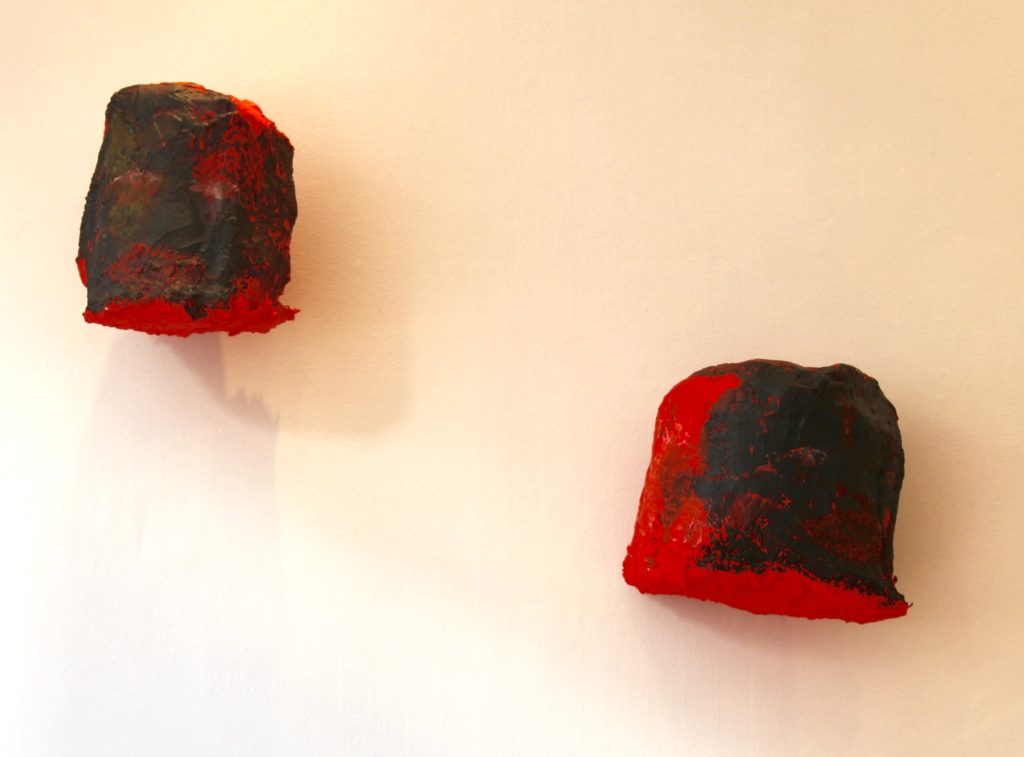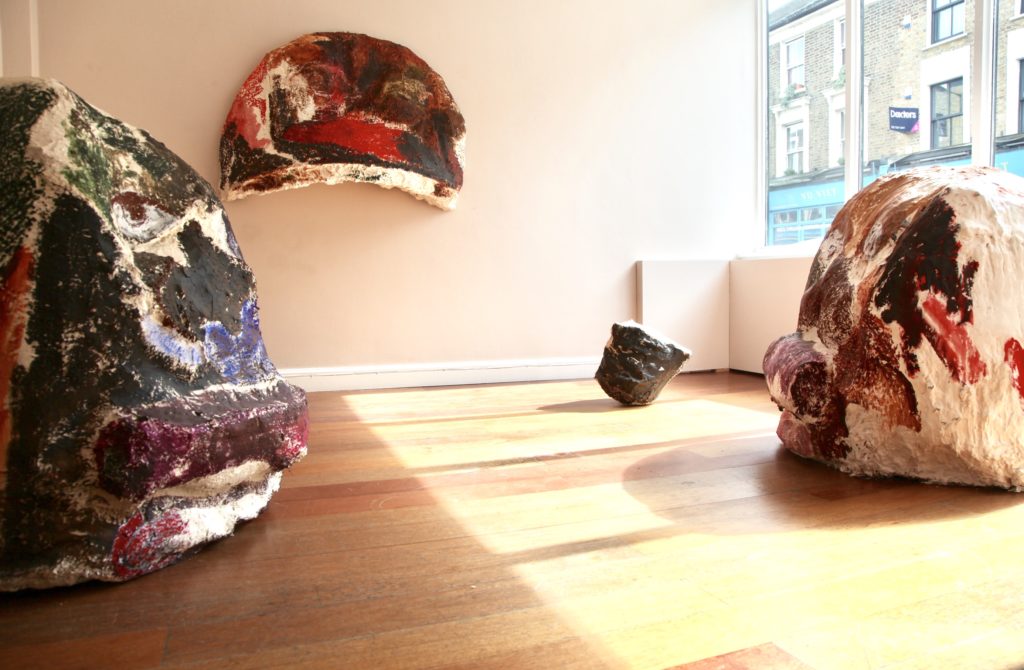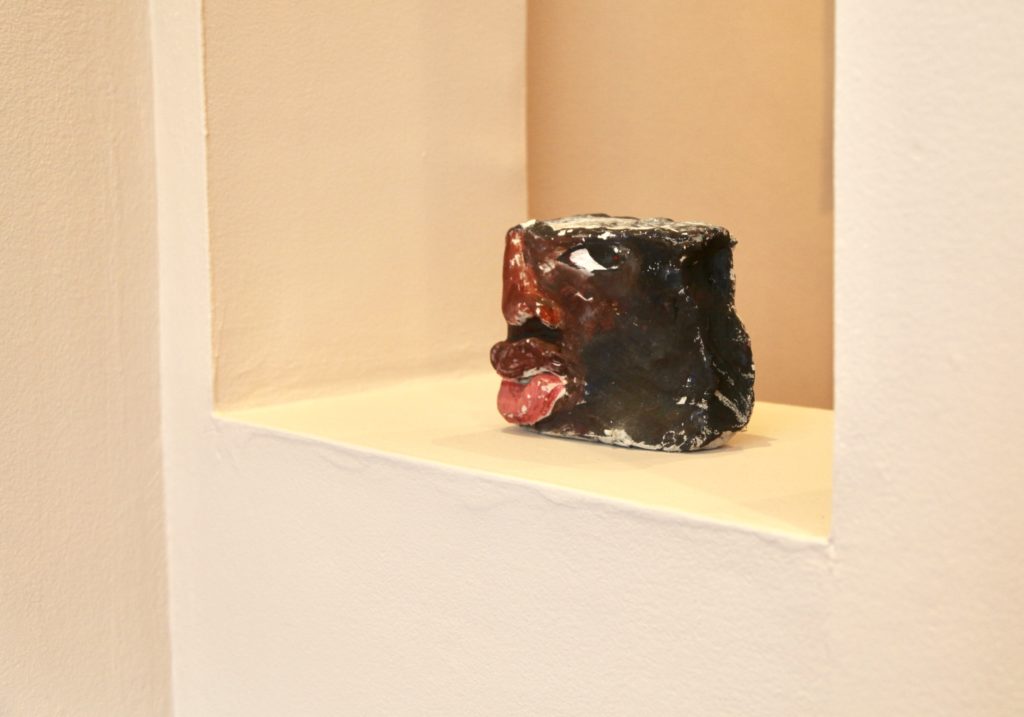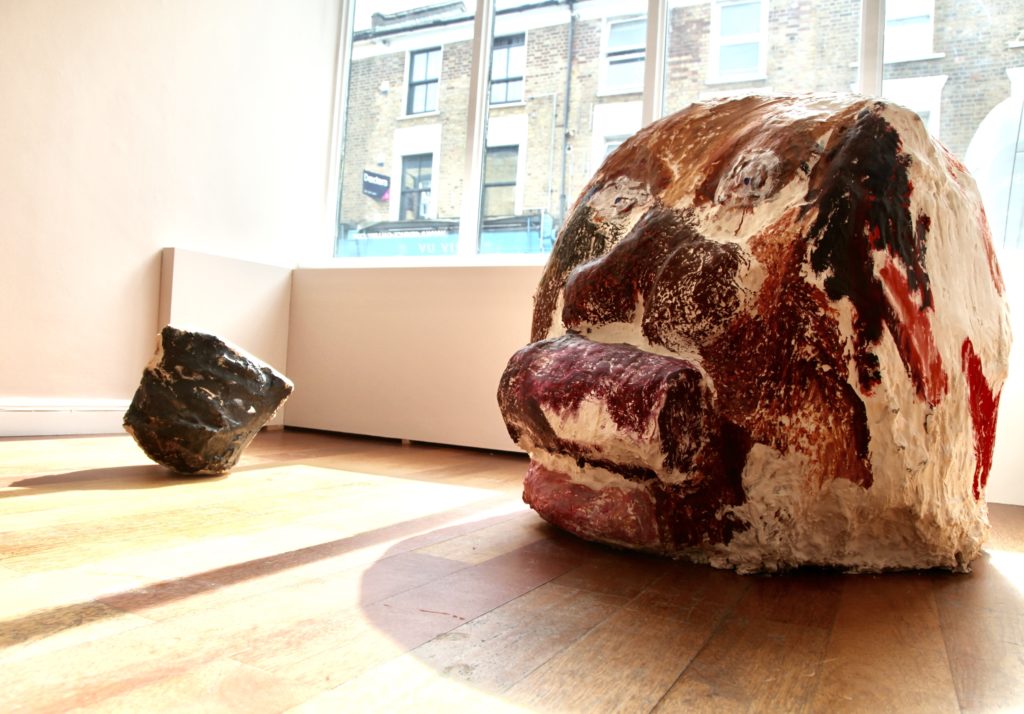“When you see the word ‘ripe’ written down, it can conjure images and sensations of taste. A simultaneous sweetness and fecundity,” says Rachel Jones about describing her work as “an exegesis of colour.” Working mostly with painting and sculpture, Jones explores ways of representing herself in a history of art that hasn’t already afforded her that privilege. “This associative relationship between words and sensations is synonymous with how I try to use colour to describe black bodies,” she continues via email, “I want to translate all that lust for self-expression into a language that exists outside of words, and instead relates to seeing and feeling with your eyes.”

Taking on the complexities of establishing an identity within a system of power and historical projection onto the black artist (and person), Jones’ solo exhibition The Black In Their Face at London’s The Residence Gallery, opens September 7 and aims to present depictions of herself in relation to the western art canon of painting and portraiture. The outcome is a series of heavy-looking, fiery red and black painted objects hung suspended on the wall, alluding to a discernible shape but denying it. Larger, more colourful ones with features sit stoic on the floor; there’s a single weary eye on half a brown painted face on a ledge.
In anticipation of the upcoming show, Jones answered some questions via email about these sculptures and their relationship to colour, the human figure, and sexuality.

** The press release talks about your interest in shifting the focus away from you specifically and towards the feeling of relating to others. Who do you feel closely connected to (from anytime) and what most inspires your work right now?
Rachel Jones: Growing up in Essex and attending art school, I’ve always felt separate from a community of other black bodies. I never thought this affected me that much, but after a residency in Bermuda last year, I realised that I had secretly been yearning for a sense of belonging, not only within the classroom at university or amongst friends, but within society, history. Art.
I feel like being connected and bound to others is the purpose of existence, and artistically I wanted to forge a space to address and meet those I belong to culturally, physically and spiritually, whilst inviting others to witness and partake in this action of self-preservation.
I’ve been enabled to do this by reading the work of writers such as Toni Morrison, Alice Walker, Ta-Nehisi Coates and Hilton Als, to name but a few. The way in which these writers detail difficult but also glorious experiences of black lives had a profound effect on me emotionally, and consequently allowed me to figure out how I wanted to tackle this subject myself through the production of art.

** Could you talk about your interest in transformation?
RJ: The black body is a body that is often afflicted with damaging and insufferable realities, and to deny a conversation, which discusses how this is still prevalent in our current contemporary society is to continue a history of acquiescence. Due to its personal and political subject matter, I frequently struggled to deny apathy as a defence mechanism for the discomfort and isolation I often felt making this work. But, throughout this uphill struggle, I realised that by producing these works I was enabling myself to address the way I have/haven’t been coping with the truth that I am finding it difficult to place myself within a history of black bodies, as they are so often misrepresented and negated. The greatest personal growth has come in admitting and accepting the fact that I need to face that challenge, and my work strives to encourage others to address their own relationship with blackness and the way black bodies are represented.
** Your sculptural objects and drawings have a portraiture feel to them — are you referencing anything specific, or drawing from memory, or another place? What is the process?

RJ: I love to look in a way where a glance can transform itself into a moment of stillness, which in turn forms a passage of time where you find yourself gazing. Within that, something unfurls and the time you take to ponder and absorb can produce the most simple but powerful truths. The satisfying curve of a line detailing someone’s neck, the dark matte-ness of skin, the blue of a face, the tired in a body; all of these things are vignettes of expression I witness daily through gazing and looking at black bodies, both known and unknown.
I use these experiences to produce images that are familiar in the way they form echoes of the portrait, but also express a depiction of blackness that is missing from history, and reminiscent of what I experience day to day.
** Your work is very visceral and expressive, there’s a lightness to it, but it is also steeped in the weight of socio-historical research and contemporary realities of what bodies of colour carry. Could you talk a bit about the relationship between these two in making the work?

RJ: Looking at colour can truly evoke a sensation of experiencing something with your whole body, and whenever I’m working on something I always strive to use that relationship to colour to imbue the objects I make with a sense of selfhood that exudes the inherent joy and love I have for bodies of colour.
To only allow the dark narrative of censored and chased bodies to govern the work, is to deny an opportunity to understand the triumphant way black bodies thrive and exist. Often, the most difficult thing to contend with through the making of my work is the fact that I’m professing feelings of need within a context that often denies that. Trying to shrug off the weight of this burden can become a daily struggle, but with time I started to understand that the whole point of me making work that addresses the complicated historic and contemporary relationship to black bodies is not that I mildly and meekly coast through that, but that I am pushed to confront the struggle I experience because it is what I truly care about.**













